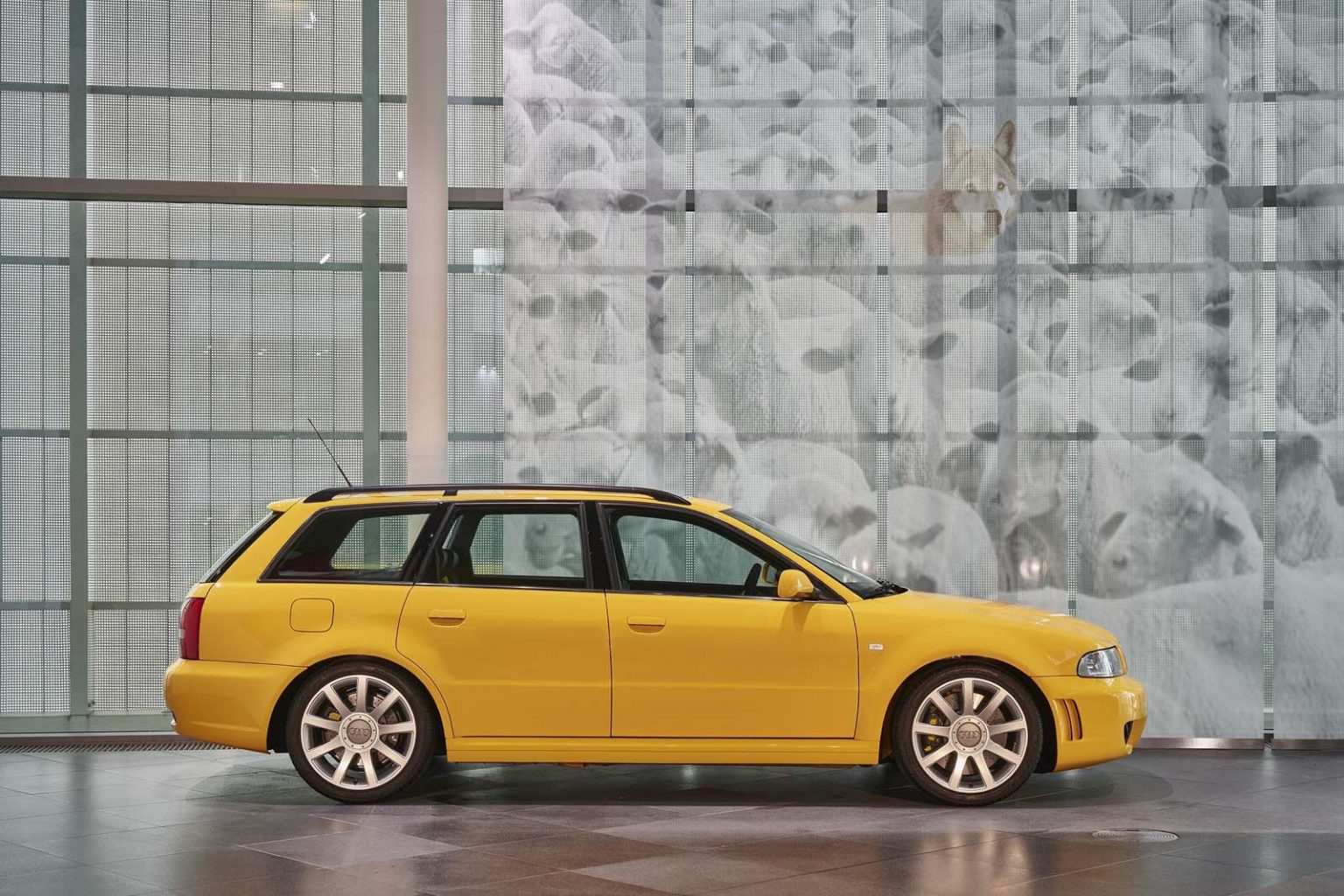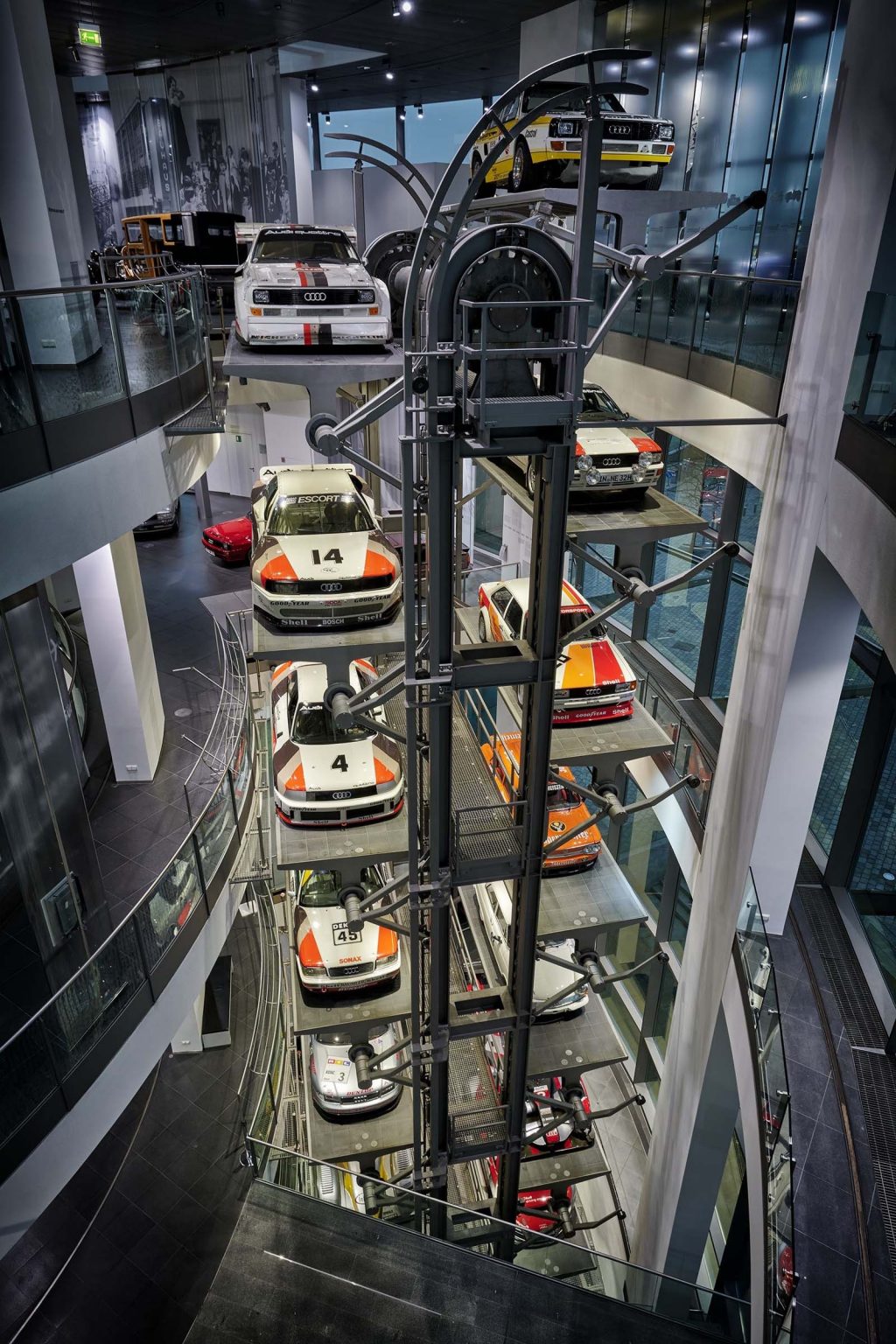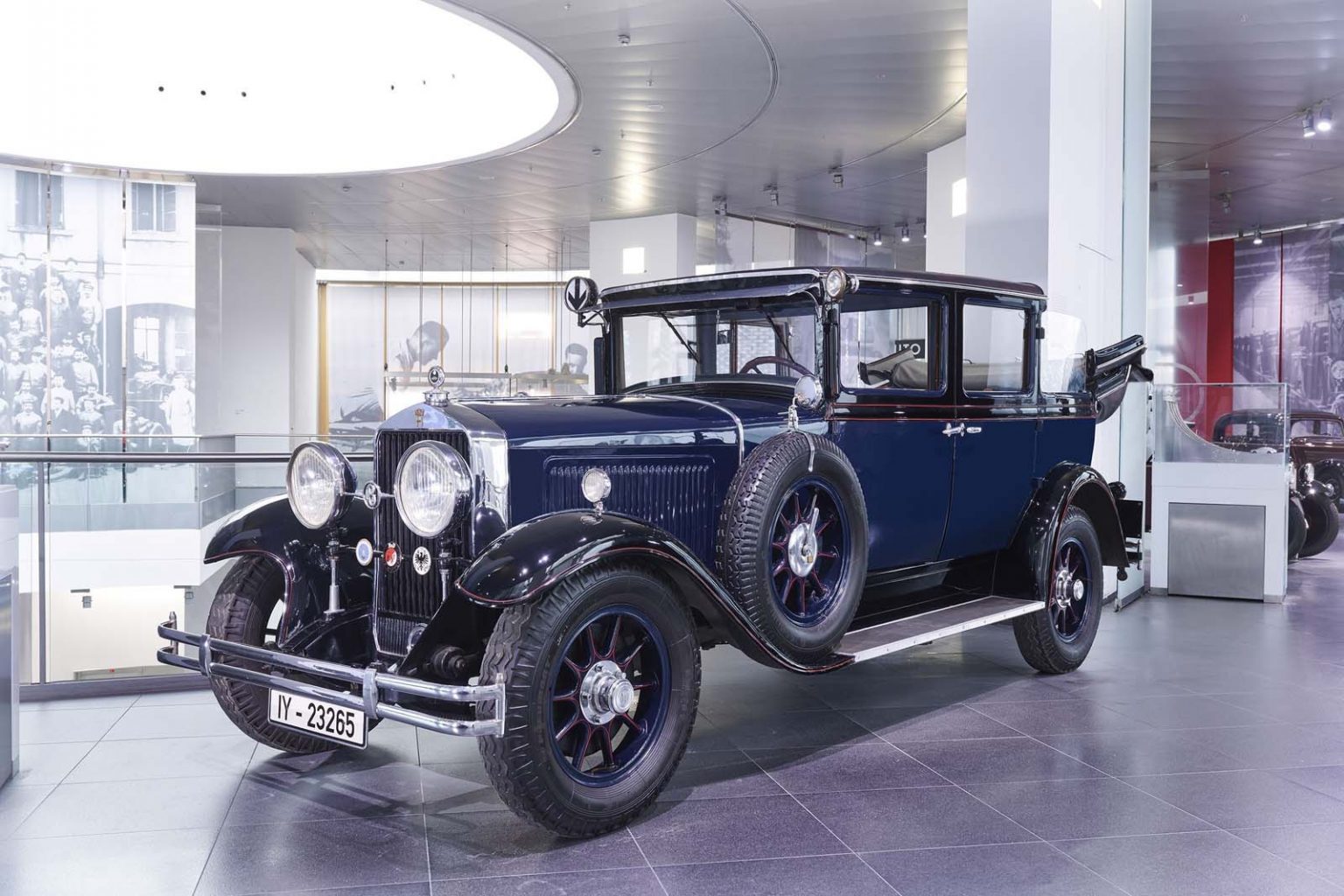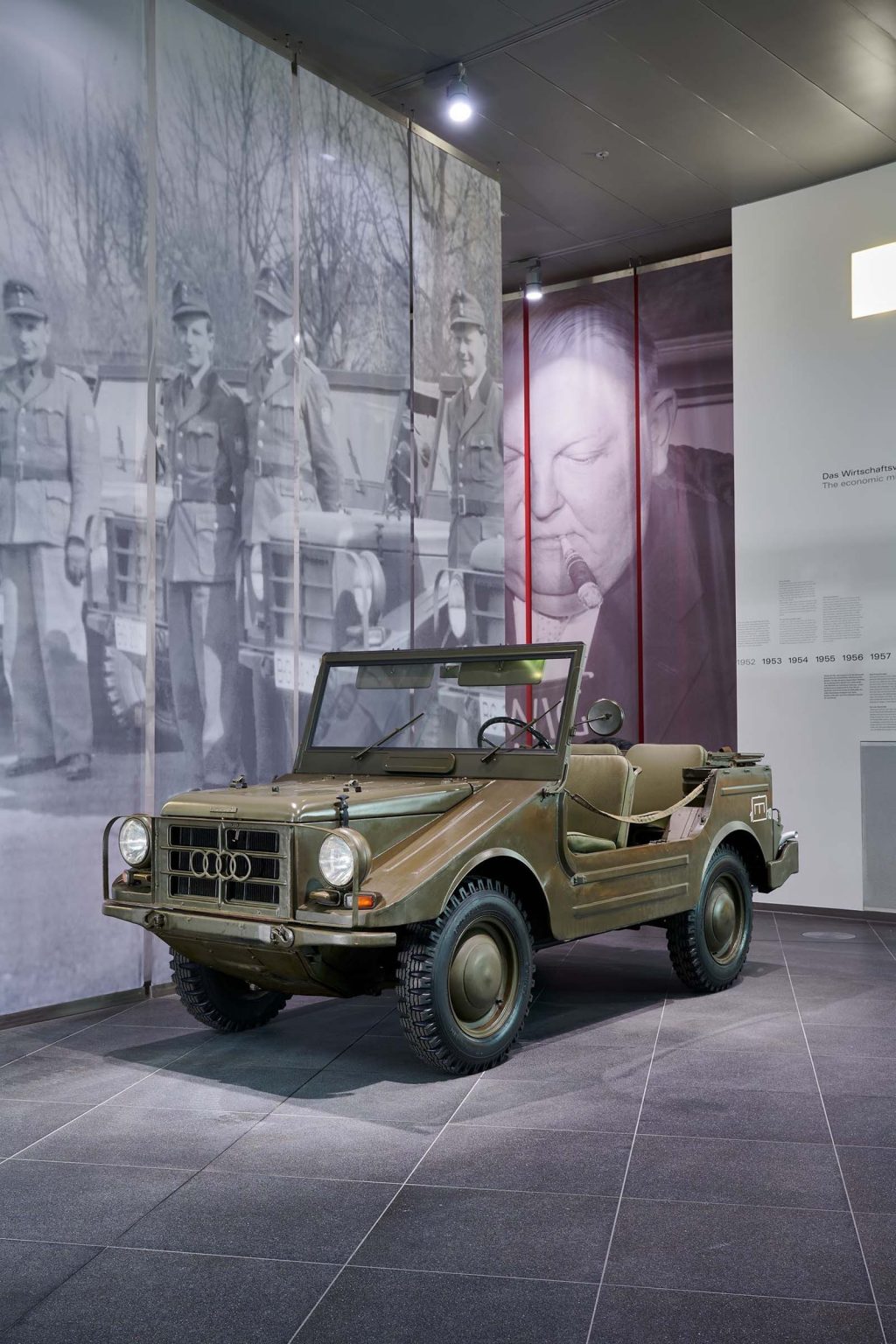
Audi museum mobile celebrates its 20th birthday with the addition of 34 new exhibits from its collection.
This expansion to the museum is to reflect the more recent parts of the company’s history. The motor sport history now permanently occupies the tiers of the vertical display. Modern icons such as the Audi TT, RS 4 and A2 now have space on the museum floor too.
On the 15 December 2000, now 20 years ago, Audi opened the Museum Mobile in Ingolstadt. with a collection of vehicles dating back to the early days of the Auto Union.
The motor sport exhibition contains everything since the 1960s on the revolving platforms. Instead of the original five exhibits, there are now fourteen. Included is the A4 DTM winner from 2007, the Le Mans R8 LMP prototype from 2002 and the A4 STW from 1996.
Rallying is represented by the quattro Group 4 from 1980, the Sport quattro Group B from 1985. Auto Union cars aren’t left out. The Jägermeister NSU 1300 TT from 1975 and the DKW F11/64 touring car from 1963.
This redesign has moved the original motorsport display from the second floor to allow the inclusion of more recent Audi icons. The Audi A8 gains a place in the museum, which highlights Audi’s return to the luxury car segment. The RS 4 and the Convertible with the five cylinder engine and the Allroad from 2001 are on display. Electric mobility can also be found with an example of the Duo III from the 1990s.
The Auto Union Silver Arrows will remain on the third floor in their original place.







